COVID-19 Insights: Widespread concern for fitness
40% of Canadians exercising less due to coronavirus
For better or worse, routines are the key to forming habits.
So what happens to our habits when all of our daily routines are disrupted like never before?
With social distancing measures in force, approximately 1 in 5 of the Caddle’s panel reported exercising a lot less.
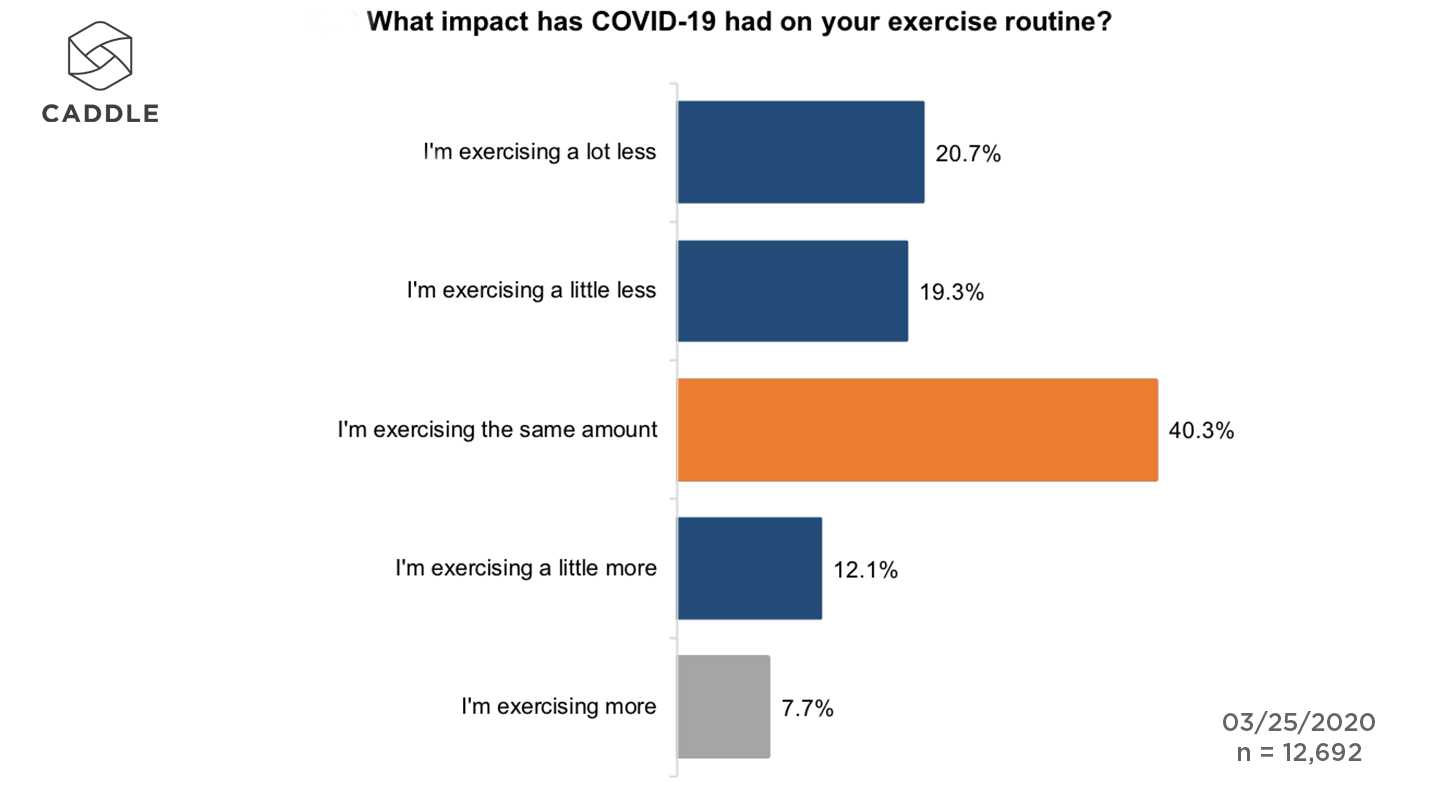
But how else is the pandemic impacting exercise and diet? Here’s what we found when we asked more than 12,000 Canadians via Caddle’s daily survey.
The impact on exercise
With 40% of the Caddle panel reporting that they are exercising less, concern about maintaining fitness is widespread. The same proportion said that social distancing measures meant they were concerned about their fitness.
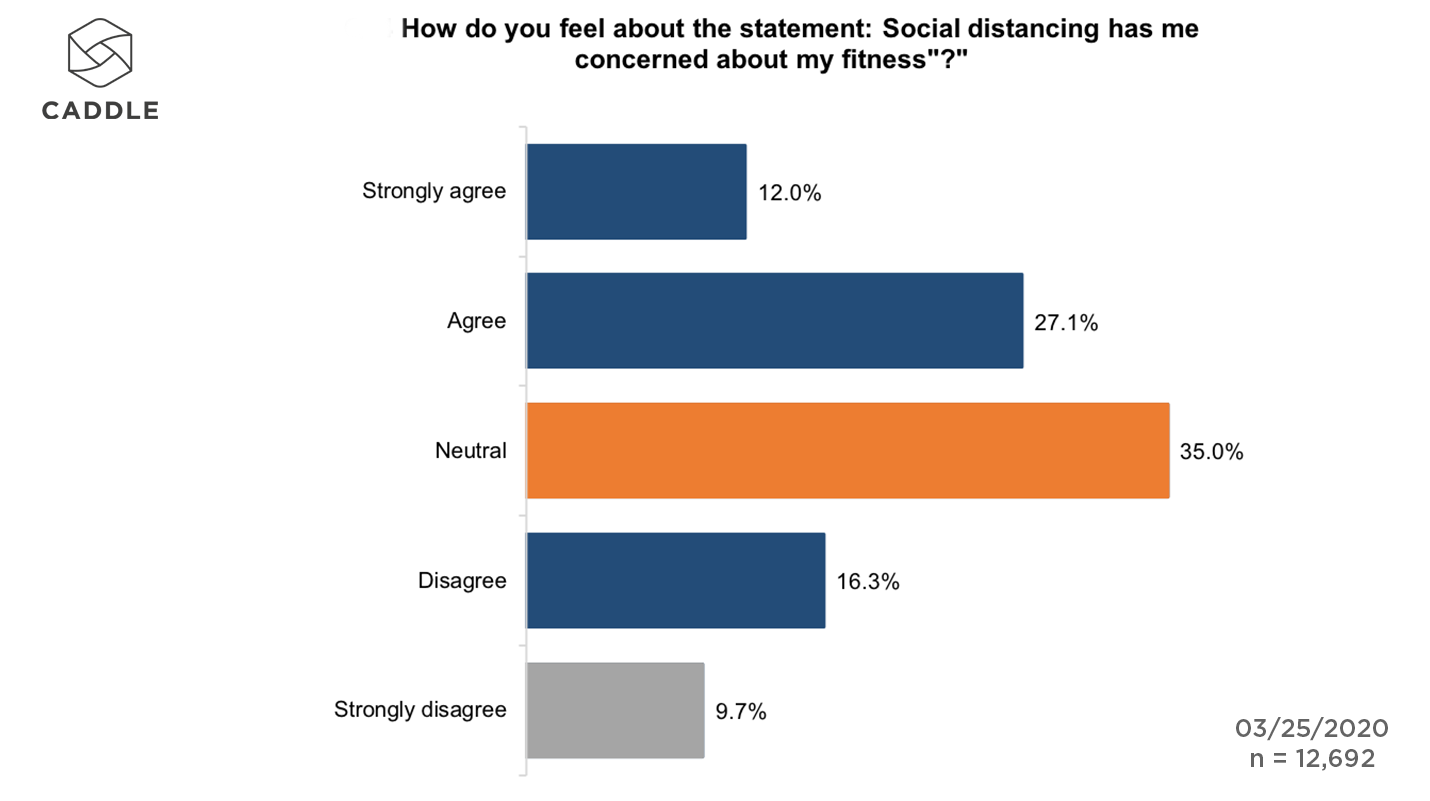
This was the case for the majority of Canadians who said they were exercising less, but also the majority those who said they were exercising more than before the coronavirus pandemic.
Both groups report being concerned about fitness levels, but show clear differences in willingness to take action. So what’s causing the difference?
Who’s working out at home?
Part of the exercise issue is age. Gen Z Canadians, as is the case with many of the questions in this week’s data, were most likely to report a change in habit as a result of social distancing.
Just over a quarter (27.1%) said their level of exercise had not been impacted by the pandemic, compared to 38.5% of Millennials and 42.5 of Gen X Canadians.
Gen Z was the generation with the highest percentage of people exercising less (46%) but also the largest proportion of respondents exercising more (26%).
Another factor appears to be attitudes to working out at home. Of Canadians who said they were getting more exercise than before the onset of social distancing, only 18% said they had never exercised at home before.
Of Canadians who reported they were exercising a lot less since social distancing began, 44% said they had never exercised at home before.
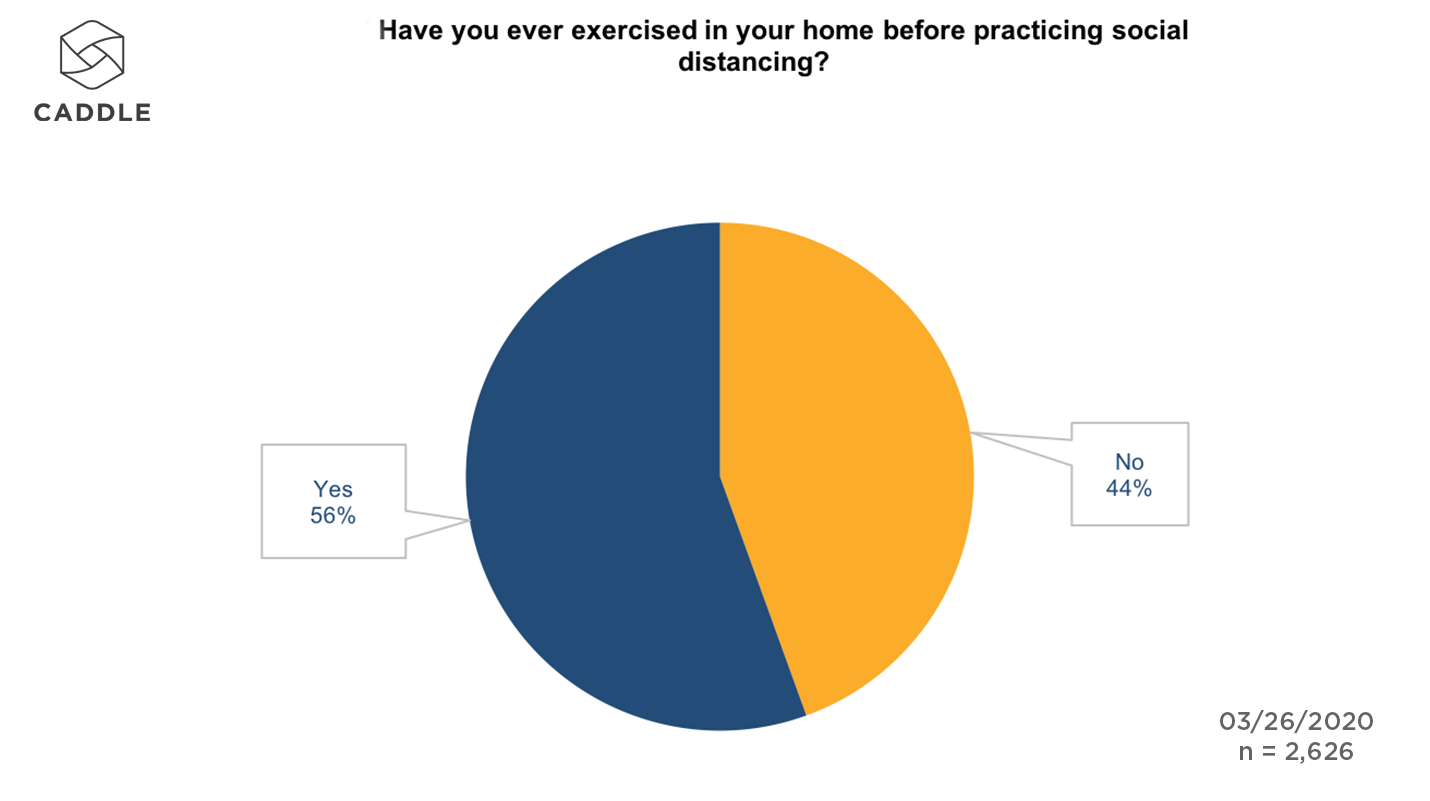
This difference is key as it raises a question about how much any rise in home workouts is driven by people trying it for the first time. Instead are we seeing people more used to exercising at home doubling down on fitness in isolation?
Who is building up their home gym?
Those who are exercising less, who over-index on never working out at home, currently have no plans to change this situation by purchasing equipment.
Those who were exercising less were also less likely to plan purchases home equipment — 57.9% said they were unlikely or very unlikely to buy home exercise equipment.
It isn’t all bad news for home exercise companies. Overall, around one in five of us feel it is likely we will buy home exercise equipment in response to social distancing.
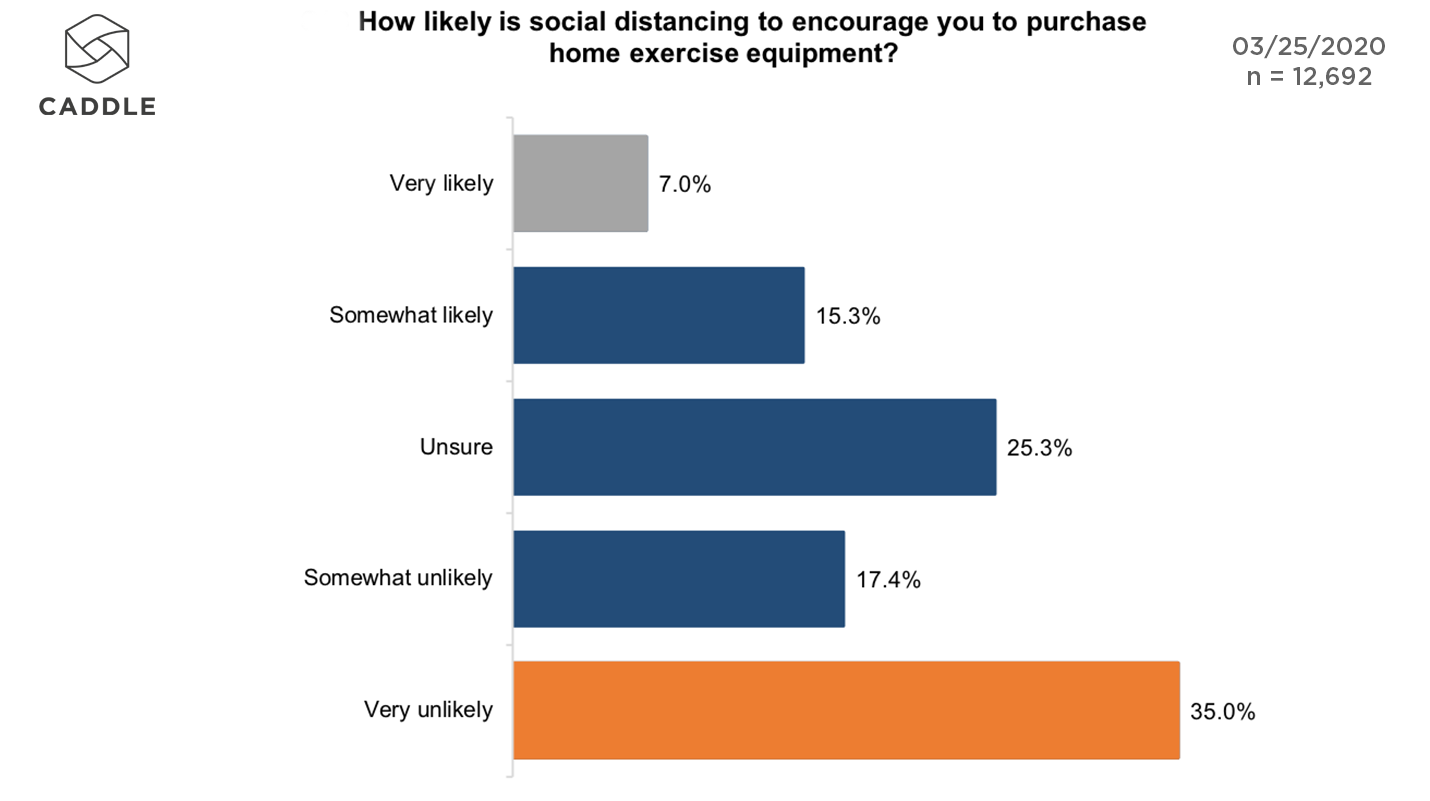
Meanwhile those who were exercising more, said they were likely to buy home exercise equipment. Almost half (48%) said they were likely or very likely to make a purchase. This could explain the relatively strong stock performance of brands like Peloton in the last month.
This is crucial for companies operating in this space. This data suggests that concerns about fitness will only go part of the way to attract new customers into the market. There seems to be a more significant initial barrier for some Canadians around exercising at home that needs to be overcome — even when they are concerned about a lack of exercise.
Îdentifying and overcoming this barrier could lead to much higher demand for home workout equipment.
Simply providing more exercise content does not appear to be enough of a trigger for everyone.
The people expecting to consume this content are the group who already say they are exercising more. Those who say they are exercising less, instead say they have no plans to increase their consumption of home workout content.
Is our diet getting worse?
So if we are concerned about getting less exercise are we trying to mitigate this with a healthier diet? Not necessarily.
For the most part, we’re just eating as we did before. Although social distancing seems to having the biggest impact on the eating habits of younger Canadians.
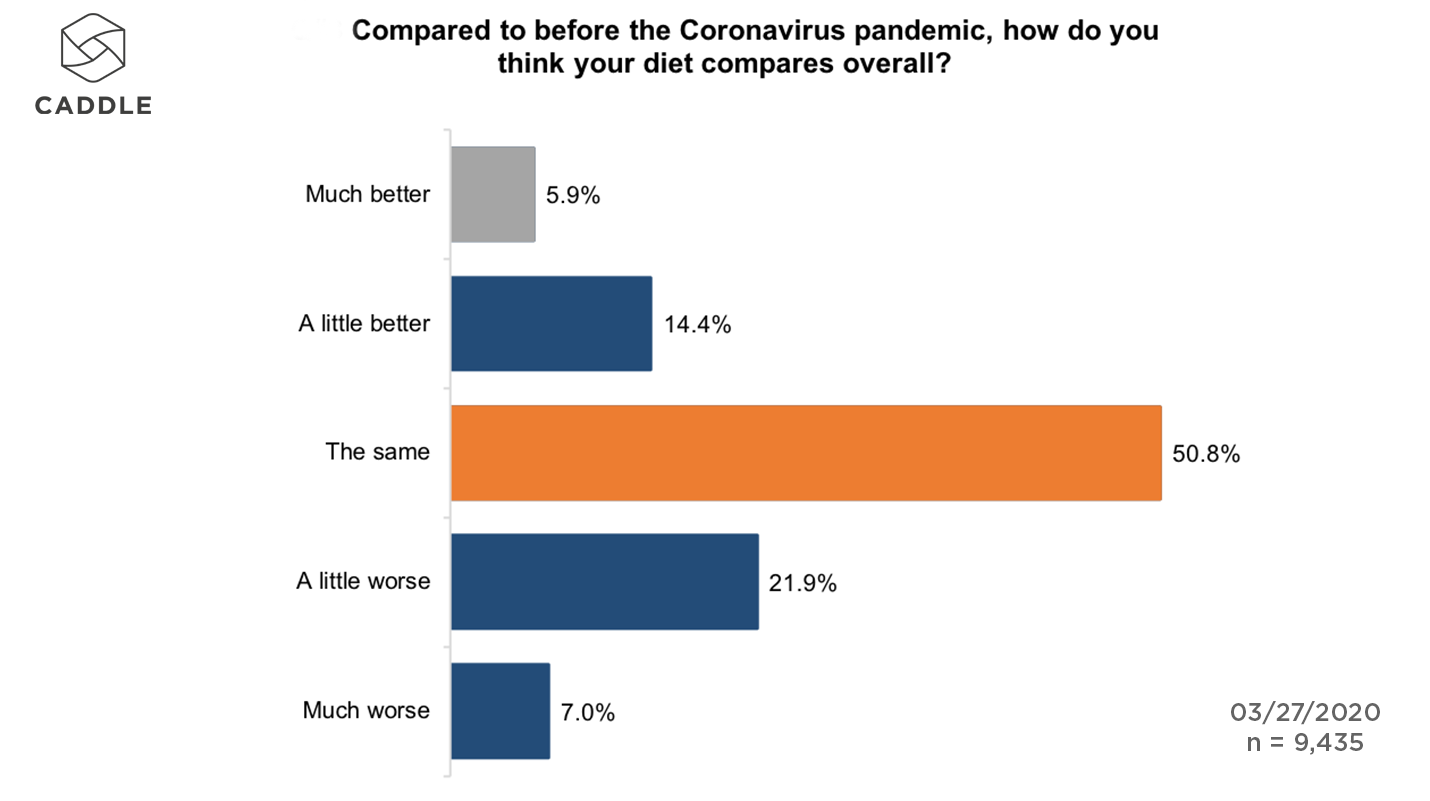
Over 60% of Baby Boomers reported no change in diet for better or worse, compared to 37% of Gen Z, and 46% of Millennials. At the same time, Millennials and Gen X were the age groups most likely to feel they were eating worse, with each generation’s net positive/negative responses coming in at -10.
However it isn’t all bad news. Gen Z were the most likely to feel they were eating better as a result of social distancing. Just over 30% of respondents said they were eating better — much more than the 21.6% of Millennials who reported an improvement in their diet.
What are we eating?
Despite more time spent at home, we apparently aren’t using that to prepare fancier meals from scratch. Nor are we looking for options that will cut carbs or sugar as ways to mitigate a less active lifestyle.
Asked what they look for most in a meal, the most popular choice was food that is quick and easy to make.
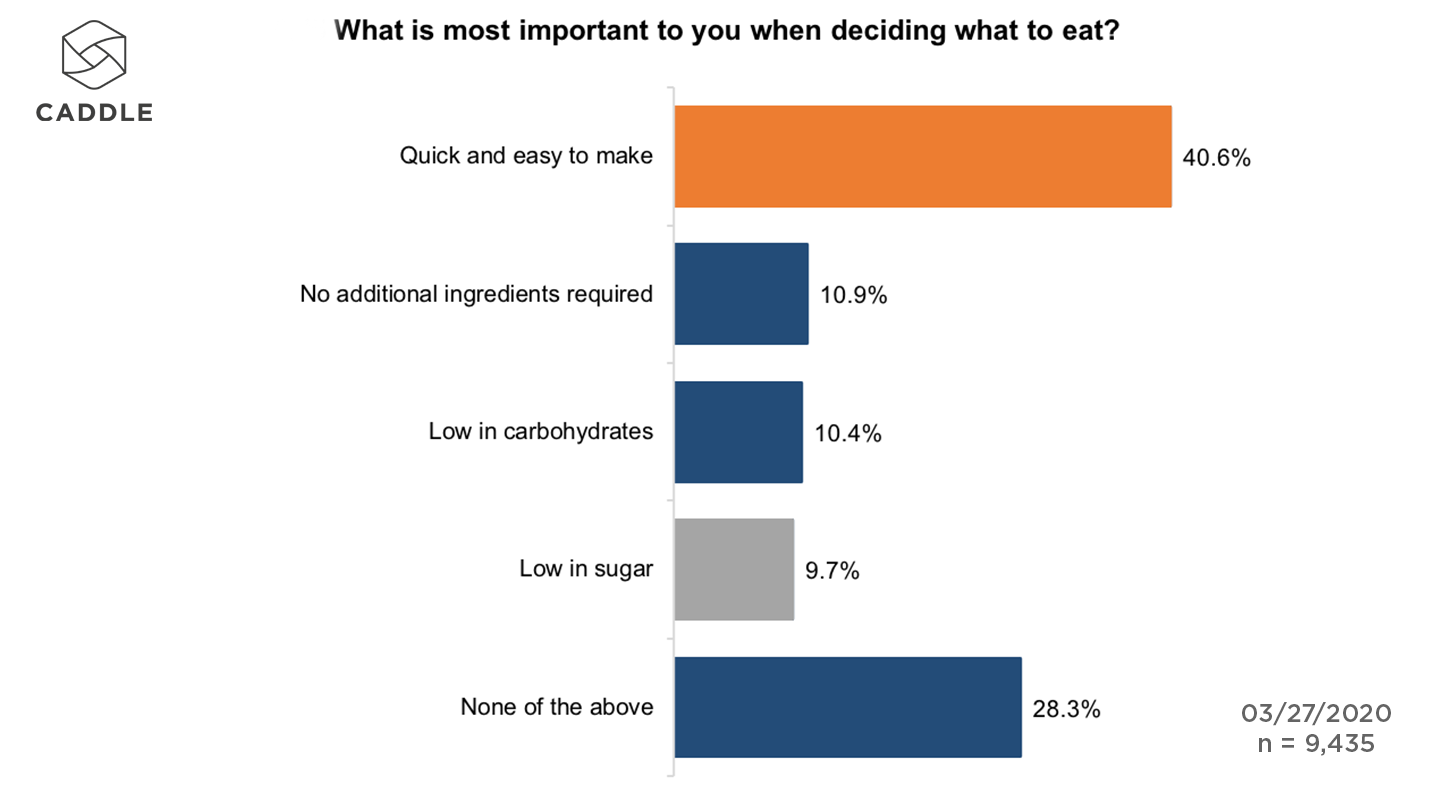
Alongside this, Caddle survey data suggests younger Canadians are indulging in more comfort food options.
For the panel overall, 29% said they were eating more comfort food, but for Gen Z this number was over 40%.
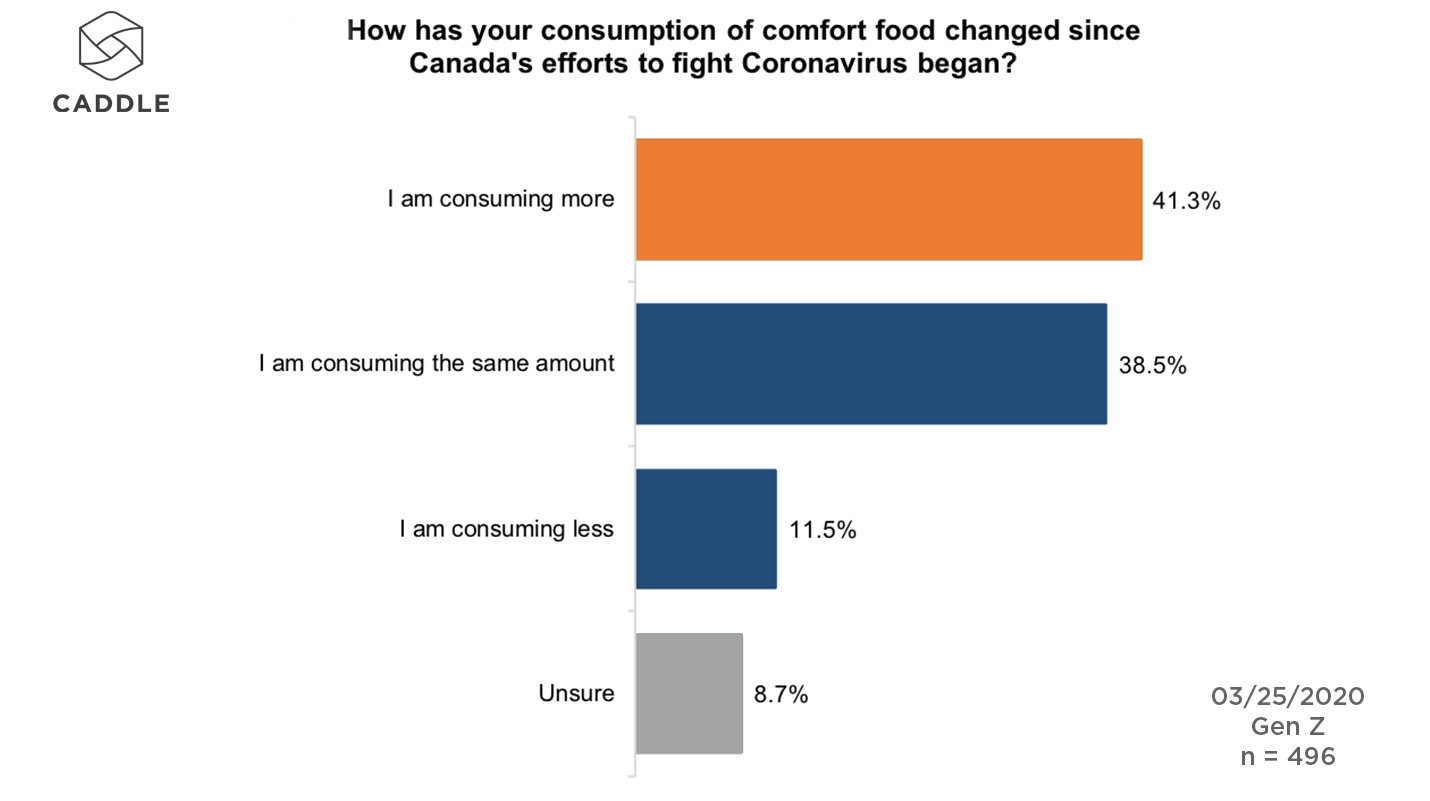
Are we drinking more?
While we might be concerned that we are eating less healthily, our alcohol consumption hasn’t necessarily gone up.
For the most part we are not drinking more. Across all age groups most Canadians reported that social distancing had not prompted a rise in their alcohol consumption.
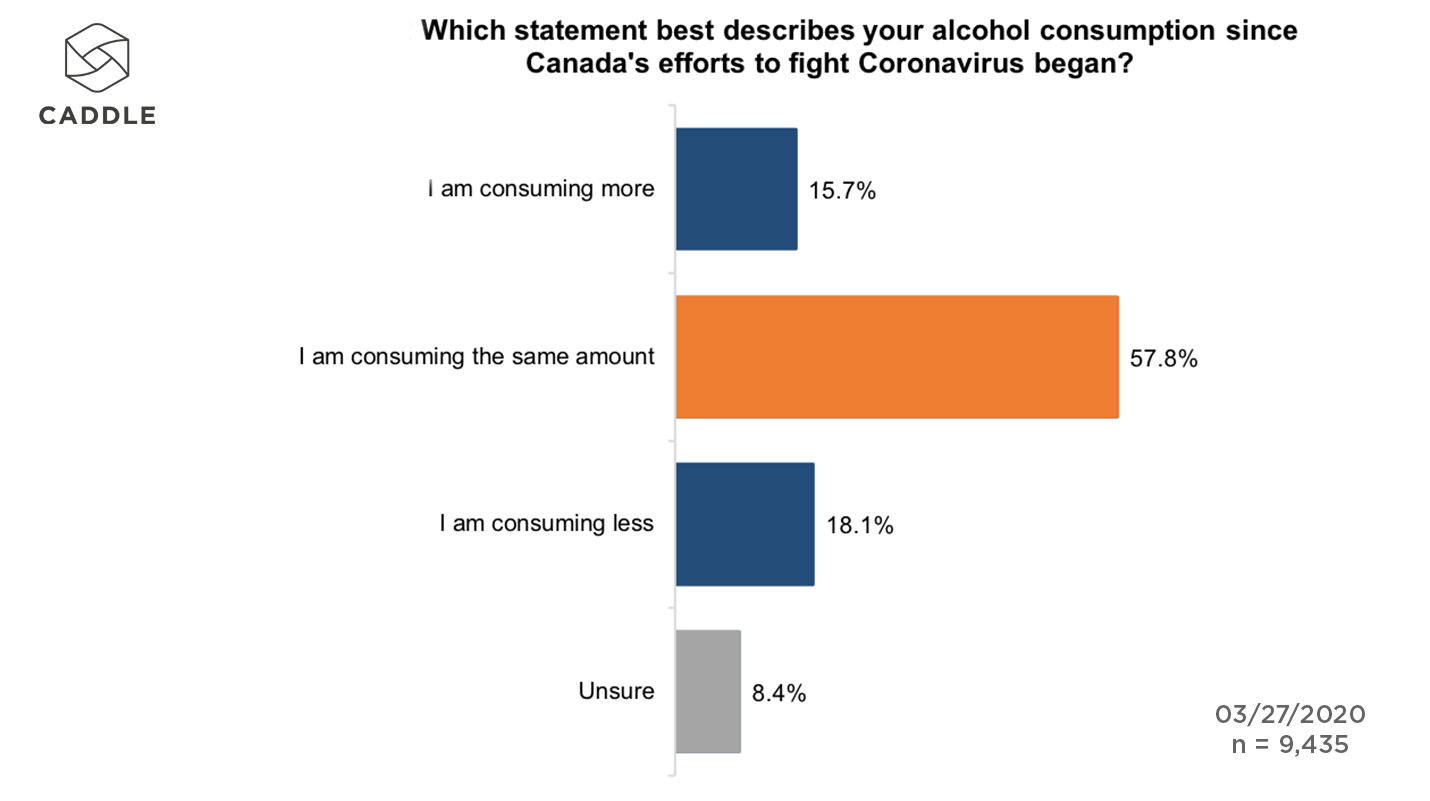
Gen Z was again an outlier, but not necessarily because this group is drinking more. While 25% are drinking more since measures to curb the pandemic were taken, 22% said they were drinking less.
So what does this mean?
Overall, the changes to diet and exercise caused by social distancing measures seem to be impacting younger Canadians the most.
Whether there was a positive or negative impact, younger Canadians were far more likely to say that social distancing has impacted what they eat, how much exercise they get, and how much they drink.
Are these changes representative of a broader openness to new things in unusual times? Potentially. Over a third of Gen Z Canadians reported trying to learn a new skill – the highest of any age group, and this only a matter of weeks into social distancing.
What we’re seeing is that younger generations are embracing change or being forced to radar faster.
The data suggests new habits are being formed right now. The question is: will they survive past the end of social isolation measures
